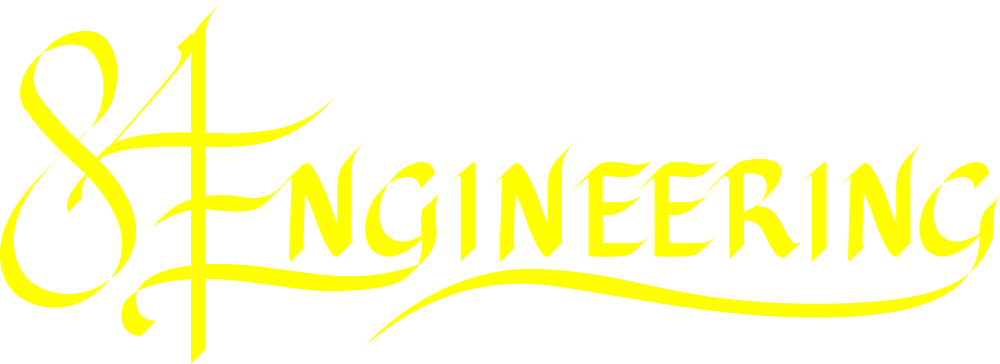Getting the perfect bevel - a beginners guide to grinding knives
When it comes to grinding knife bevels, there are countless ways to 'skin a cat'. Some makers spend years perfecting the art of free-hand grinding and can achieve clean, angle-perfect bevels using muscle memory, a finely-honed 'feel' for the blade and a trained eye.
For the rest of us mere mortals, bevels can be hit-and-miss. Whether it's struggling to maintain a consistent angle, overshooting your grind, gouge marks etc. Every knife maker has had to scrap a blank due to a botched bevel at some point in their journey!
Techniques such as the 'push stick' method and inventions like the 'bevel jig' help with bevel grinding, but can still be tricky to master or be time consuming and difficult to set up.
Here we're going to show you how simple it is to grind clean, consistent bevels using the 84 Engineering Angle Adjustable Rest.
1. Scribing the knife blank
As with any bevel grinding method, the process begins with scoring a centre line.
- Use a sharpie or layout dye to colour the edge of the knife so the score marks are clearly visible.
- Lay the knife blank on a flat surface. Using a height gauge or a drill bit the same diameter as the thickness of your steel (in this case 1/8"), score along the knife edge. Flip the knife and repeat.

Drawing and measuring your bevel
Use a scribe or sharpie to draw your bevel line on both sides of the blade.
Measure the height of the bevel as shown. This particular bevel measured 19mm.

Calculate your bevel angle
To calculate your grind angle, three measurements are required:
- The material thickness (1/8" or 3.2mm)
- The height of the bevel (19mm)
- The thickness of the edge you want to leave (in our case, 0.9mm)
Enter these measurements into one of the free online bevel calculators (such as the Wedgek calculator) to generate your grind angle. Our angle required is 3.5°.
Setting the rest angle
1. Clamp the spine of your knife to a square block. We recommend a 123 block however timber, angle iron etc. will work fine.
2. Stick a digital inclinometer (angle box) to the platen, zero the angle, then place the inclinometer on the blade of the knife.
3. Loosten the locking lever on the Angle Adjustable Rest and use the fine adjustment knob to set the correct angle (3.5° for this knife). Tighten the locking lever to secure.
Note: For best accuracy, we recommend starting with the rest at its lowest point, then adjusting 'up' (winding the knob in) until your desired angle is achieved.
4. If you don't have a digital inclinometer, a protractor can be used as shown. If using a protractor, add 90° to your bevel angle and measure between the rest and platen (our protractor is set at 93.5°).




Grinding the bevel
When grinding your bevels, it is best to use a 50 or 60 grit ceramic belt. Your 2x72" or 2x48" belt grinder should be set to run forwards and at full speed to achieve best belt life.
If you are still learning, slow the belt speed and take your time - just be aware, the ceramic abrasive will glaze more quickly.
While grinding, keep a consistent pressure on the blade - pushing in the centre of the platen to avoid the edges of the belt gouging the blade.
Use your other hand to apply downward pressure to the 123 block (or object your knife is clamped to), ensuring it stays flat on the work rest.

Take your time grinding, regularly checking your bevel. You should grind to within 1-2mm of your scribed bevel line. We want to leave this material for finishing / thinning on the Plunge Platen.
By the time your bevel is close to your scribe line, the edge should be thinned to the scratch marks from the drill bit.
Before heat-treating, swap out the coarse belt for a 120 grit ceramic and grind the bevel until the 50 grit 'scratches' are gone. This will help prevent the knife cracking during heat-treat.



Time for heat treating
Once you've finished grinding your bevels, it's time to heat treat your knife.
The next blog post will be a tutorial on using the Plunge Platen to clean up your plunge lines and sand your bevel to a high-grit finish.
Here is a short video showing a bevel being ground ➡
If you aren't already signed up, feel free to join our newsletter so you don't miss out on future posts!

